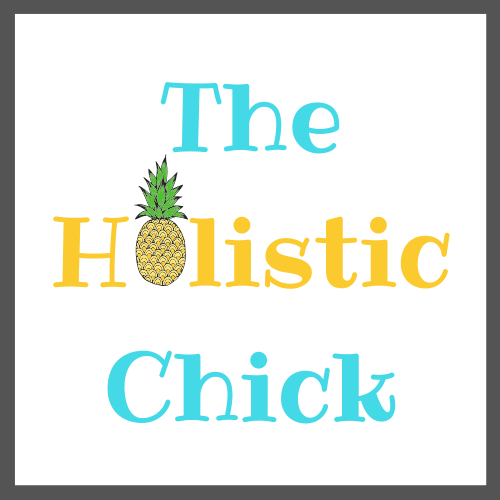Reading Food Labels
Reading Food Labels
It has been ingrained in us to read labels, especially the calories. Looking at calories does not tell us if the product is full of goodness or junk. Once you know what to look for, you will find purchasing healthy products much easier.
Short list on how to navigate labels. Longer descriptions will follow:
1. Make sure it is real ingredients. You should be able to read, recognize and pronounce the names.
2. Check for highly processed/chemical ingredients, hidden sugar and salt.
3. Look at the serving size.
4. For fresh fruits and vegetables, look at the number code on the sticker. If it starts with 9, it is organic. 3 and 4 are conventional and 8 is GMO.
Ingredients
If it’s in a package, look at the INGREDIENTS first. The ingredients are what matters most. We want to know there are not a lot of crazy things in our food. A clean food will simply have real ingredients and will be minimally processed (if at all).
I also look for: “Certified Humane” on eggs and meat products “Non-GMO Verified” on other packaged products.
Stay Away From…
There are lot of ingredients to stay away from because they are shown to be harmful to your health and there are no studies to see what happens when they are combined together and with other chemicals you are exposed to everyday. Another problem is that the processed food contains mostly a combination of the junk listed below. They label it as food, but it does not provide nourishment, in fact, they leach the nutrients you do have. You’re body has no idea how to process this stuff!
There are many deceptive names for the synthetic/chemical/highly processed products listed below, but these are the most recognizable names. The short list of ingredients to stay away from is…
Artificial Colors
Artificial Flavors
Artificial Preservatives
Artificial Sweeteners
Bleached or Bromated Flours
BHA and BHT
Carrageenan
EDTA anything
High Fructose Corn Syrup
Hydrogenated or Partially Hydrogenated Oils
MSG (Monosodium Glutamate) Look at all the names MSG is disguised as here.
Nitrates
Parabens
Polysorbate 80
Propyl Gallate
TBHQ and other preservatives
Vegetable Oils: Corn, Canola, Soy
Fruits and vegetables with a sticker that starts with “8”. It means it’s GMO. (“9” means organic)
Sugar
Food labels are incredibly deceptive when it comes to sugar. The average person consumes about 130 lbs of sugar per year (that’s a 40%+ increase from the 70’s) according to the Diabetes Council in 2017. Much of that sugar is hidden in everyday products like pasta sauce, yogurt, frozen dinners, anything “flavored”, most things labeled “fat-free”, granola and energy bars, ketchup and other condiments, Vitamin Waters, breads, cereals, pre-packaged smoothies, energy drinks, sodas, chocolate milk, dried fruits.
Common names for sugar: anything that has the word “sugar”, high fructose corn sugar, agave, any corn sweetener, anything ending in “ose” (dextrose, fructose, glucose, lactose, maltose, sucrose), fruit juice concentrates, honey, molasses, etc.
Fake sugars: Sucralose (Splenda), Saccharin (Sweet and Low), Aspartame (Equal, NutriSweet) are the most popular. For a complete list, go here: http://www.doctoroz.com/article/list-names-artificial-sweeteners
Fake sugars should NEVER be consumed.
Natural sweeteners: raw and local honey, molasses, Stevia (this can be very refined, so be careful), real maple syrup grade B, sugar alcohols (can create digestive issues and toxic to dogs), chicory root, Vita fiber or fiber yum are liquid made from Tapioca (Cassava Root), Monck fruit, coconut sugar, dates.
If you find the label is very high in sugar, it may be because it has dates or fruit. That’s why we read ingredients first!
Salt
There is so much sodium in packaged food (and restaurant food too). If you are eating packaged food, eating out a lot and adding salt to your meals, that could be a recipe for disaster. According to the CDC, 90% of Americans eat too much sodium. The average daily sodium intake for Americans 2 years old or older is more than 3,400 mg (no more than 2,300 mg should be consumed).
We need salt to regulate fluid in our bodies. Choose Himalayan or Celtic sea salt which have minerals. Add them yourself in moderation.
Go for salt-free or low-sodium choices when choosing packaged food.
Serving Size
This can be very surprising. The serving size could be 2, 3, even 4x more than you think. Pay close attention to the serving size and realize that the rest of the label’s information is based on that serving size.
The rest of the label
If you base your meals around leafy greens, vegetables and fruits, counting calories and fat becomes obsolete. If you still want to pay attention to calories and fat, that’s fine. The ingredients will tell you if they will be high. For instance, if there are nuts, the fat content and calories will be higher. Adjust your serving size accordingly.
The more real food you eat, the less you have to worry about label reading!
Here are examples of sodium, sugar and good (or better) vs bad ingredients:
Pacific Organic Creamy Tomato Soup
750 mg of sodium and 12 grams of sugar for 1 cup
Reduced Fat Milk*, Water, Tomato Paste*, Cane Sugar*, Sea Salt, Sodium Citrate, Rice Flour*, Cheese Flavor*, Garlic Powder*, Onion Powder* *Organic
- The Low sodium version is 350 mg of sodium and 12 grams of sugar for 1 cup. Same ingredients as above plus sea salt.
Campbell’s Tomato Soup
480 mg of sodium and 12 grams of sugar for ½ cup (so 960 sodium and 24 sugar for 1 cup).
Tomato Puree (Water, Tomato Paste), High Fructose Corn Syrup, Wheat Flour, Water, Salt, Potassium Chloride, Flavoring, Citric Acid, Lower Sodium Natural Sea Salt, Ascorbic Acid (Vitamin C), Monopotassium Phosphate.
